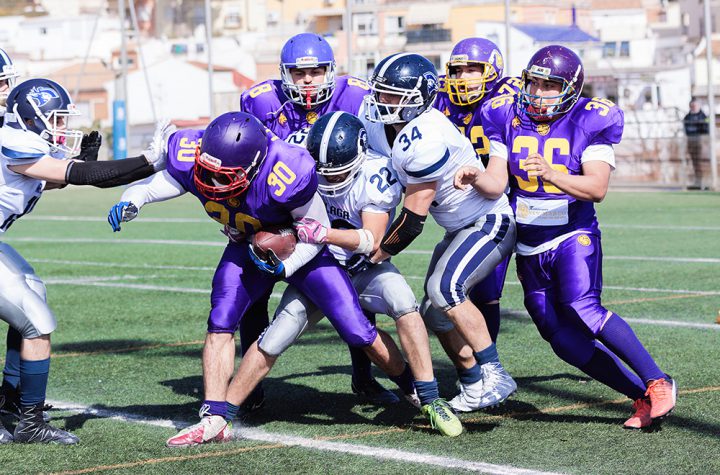
38 with 34 posters participating
Definitely not Marvel’s Thor: Norwegian actor David Stakston plays Magne, a high school student who finds himself imbued with the powers of the god of thunder in Ragnarok.
A lonely, awkward high school student finds himself channeling the mythic powers of Thor in Ragnarok, a surprisingly engaging Norwegian-language reworking of Norse mythology brought into the 21st century. Granted, Ragnarok isn’t going to give the MCU incarnation of Thor a run for his money any time soon. But despite occasional lapses into clumsy moralizing and clichéd teen-angst drama, the underlying story ultimately works.
(Mild spoilers below.)
The series is set in the fictional town of Edda, Norwaynamed after two Nordic literary masterpieces, the 13th-century Poetic Edda and Snorri Sturluson’s Prose Eddaand we are told that this is the place where the gods and giants once battled to the death in the original Ragnarok. A handful survived, and a family of immortal giants currently heads up Jutul Industries (Jutul is a variant of jötnar, a mythological class of giants), on which the town depends for its economic survival. Unfortunately, the corporation has also been disregarding the environment for decades, dumping toxic chemicals into the water supply, while global warming is causing the glaciers to recede at an alarming rate.
But the gods are not yet dead either, it seems. When Magne (David Stakston) moves back to his hometown with his younger brother Laurits (Jonas Strand Gravli) and single mom Turid (Henriette Steenstrup), a touch from a local old woman named Wenche (Eli Anne Linnestad) sets off noticeable physical changes. He no longer needs his glasses, for instance, and suddenly has enhanced strength and speed. Plus, he can sense changes in the weather and seems to have an affinity for thunder and lightning. The name “Thor” isn’t uttered until several episodes in, but the parallels are obvious, especially since in Norse mythology, Thor has a son named Magni.
If Magne is channeling Thor, his brother Laurits is clearly meant to mirror the trickster Loki. There are hints that Turid once had a fling with Jutul family “patriarch” Vidar Jutul (Gísli Örn Garðarsson), and that the gender-fluid Laurits might just be half-Jutul, which would explain why he is so drawn to that family (and is in keeping with the Loki of Norse myth, who teamed up with an army of giants for Ragnarok). In addition to Vidar, there is “daughter” Saxa (played to disdainful perfection by Theresa Frostad Eggesbø) and “son” Fjor (Herman Tømmeraas), who pretty much rule the local high school. Their “mother,” Ran (Synnøve Macody Lund) is the high school principal, whose affection for her youthful charges occasionally veers into the inappropriate.
- The fictional town of Edda, Norway.
- The main cast of Ragnarok (l-r): Fjor (Herman Tømmeraas), Isolde (Ylva Bjørkaas Thedin), Saxa (Theresa Frostad Eggesbø), Gry (Emma Bones), Laurits (Jonas Strand Gravli), and Magne (David Stakston).
- Magne and Laurits on their first day at another new school.
- Magne finds a friend in fellow misfit Isolde.
- Magne has a crush on Gry.
- He has a rival in Fjor, a member of the wealthy Jutul family.
- Fjor and Gry make a connection.
- Saxa, Fjor’s sister, holds court.
- Ran Jutul (Synnøve Macody Lund), their mother, is the school principal.
- Jutul patriarch Vidar (Gísli Örn Garðarsson) takes his shirt off a lot.
- Isolde stumbles upon a tunnel, exposed because the glacier is receding so rapidly due to climate change.
- Magne watches Isolde paraglide down the mountain.
- Magne is changing, with new abilities.
- Magne and Gry at the school dance.
- Magne and his brother, Laurits, on the school’s annual camping trip.
- Magne senses something amiss.
- The Jutul family prepares for war.
- Magne and Ran arm wrestle.
- Magne channels the power of Thor.
Everyone assumes the physically imposing, dyslexic Magne is dimwittedhe’s more of a slow, deliberate thinkerand his lack of social skills makes him a misfit, although he finds a platonic friend in fellow outcast Isolde (Ylva Bjørkaas Thedin), a passionate environmentalist who stumbles on a Jutul family secret. Magne develops a crush on Gry (Emma Bones), who friend-zones him in favor of the handsome and charming Fjor. And Isolde’s investigations soon put him on a collision course with the Jutul clan.
There are some fine performances here. For instance, Gravli brings just the right enigmatic touch to Laurits, whose motives and loyalties are never quite clear. Although he torments his older brother, he still publicly mocks members of the Jutul family in revenge when they launch a smear campaign against Magne in order to nullify the threat he poses to them. Tømmeraas’ Fjor is equally engaging as he finds himself torn between family loyalty and his love for Gry. And Steenstrup is quite affecting as Turid, who left Edda after the tragic death of her husband, and still struggles with depression. She discourages Magne from pursuing the Jutul family, since she now works for the company and relies on that income to provide a stable home for her sons. The threat the Jutuls pose to the environment pales in comparison.
The series comes alive whenever it dispenses with the climate change theme and focuses on the central characters and conflicts.
That said, there are some very silly elements that challenge one’s willing suspension of disbelief. Vidar Jutul, for instance, has a penchant for stripping down whenever he’s about to unleash a beat-downwhich happens a lot. I get that it’s meant to symbolize Vidar shedding his veneer of sophisticated civility to reveal his inner feral nature, but it does get ridiculous over time. And what passes for “cool” at Edda’s local high school dance might strike younger American viewers in particular as hopelessly stuck in the 1990s. But that’s a regional cultural difference, not necessarily a flaw. (I personally thought the Goth-metal music set to Old Norse lyrics was intriguing.)
On paper, at least, this is a clever use of the concept of Ragnarok as a metaphor for modern-day climate change, given that the mythological apocalypse is traditionally associated with extreme weather patterns that lead to a crisis for humanity. However, the execution is heavy-handed. Too often, the tone is didactic and lecturing, and saddling Thedin’s Isolde with all that leaden dialogue doesn’t do her character any favors. She’s the least interesting and likable of the lot; she shouldn’t be. It’s no accident that the series comes alive whenever it dispenses with the climate change theme and focuses on the central characters and conflicts. That’s when it channels the full power of the Norse mythology that serves as the series’ source material, which has endured for centuries for a reason.
Ragnarok has been unfavorably likened to the Twilight saga, and the comparison is not entirely undeserved. Sneer if you must, but the Twilight books sold over 120 million copies worldwide, while the films grossed over $3.3 billion globally at the box office and propelled Kristen Stewart and Robert Pattinson to stardom. That series clearly tapped into something fundamentally appealing to the human psyche. The same is true of Ragnarok, despite its occasional silliness. And at just six episodes, it’s not too much of a time sink in this binge-watching era if you’re inclined to give it a whirl.
Ragnarok is currently streaming on Netflix. In Norwegian with English subtitles.
Listing image by Netflix




More Stories
All the reaction from the Premier League, plus FA Cup first-round goals.
Company co-founder Josh Giegel and Sara Lucian are the first people in history to ride in a Hyperloop.